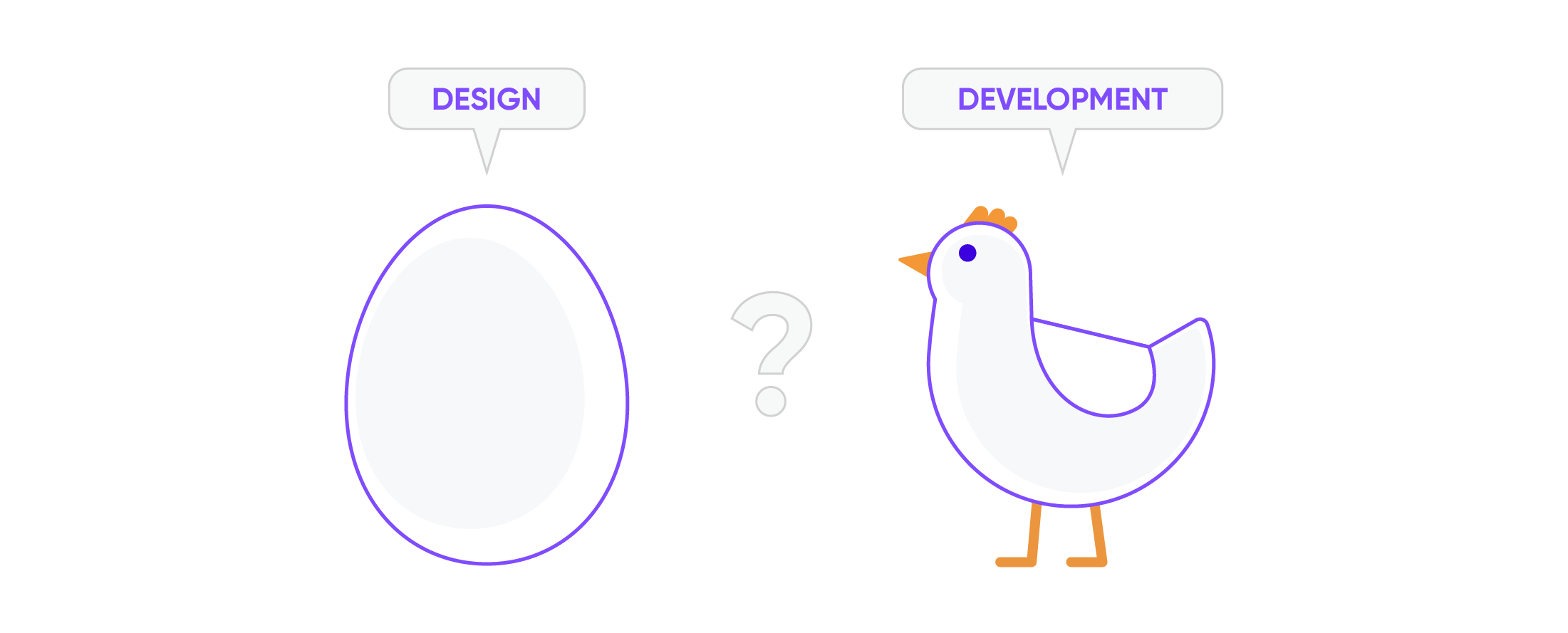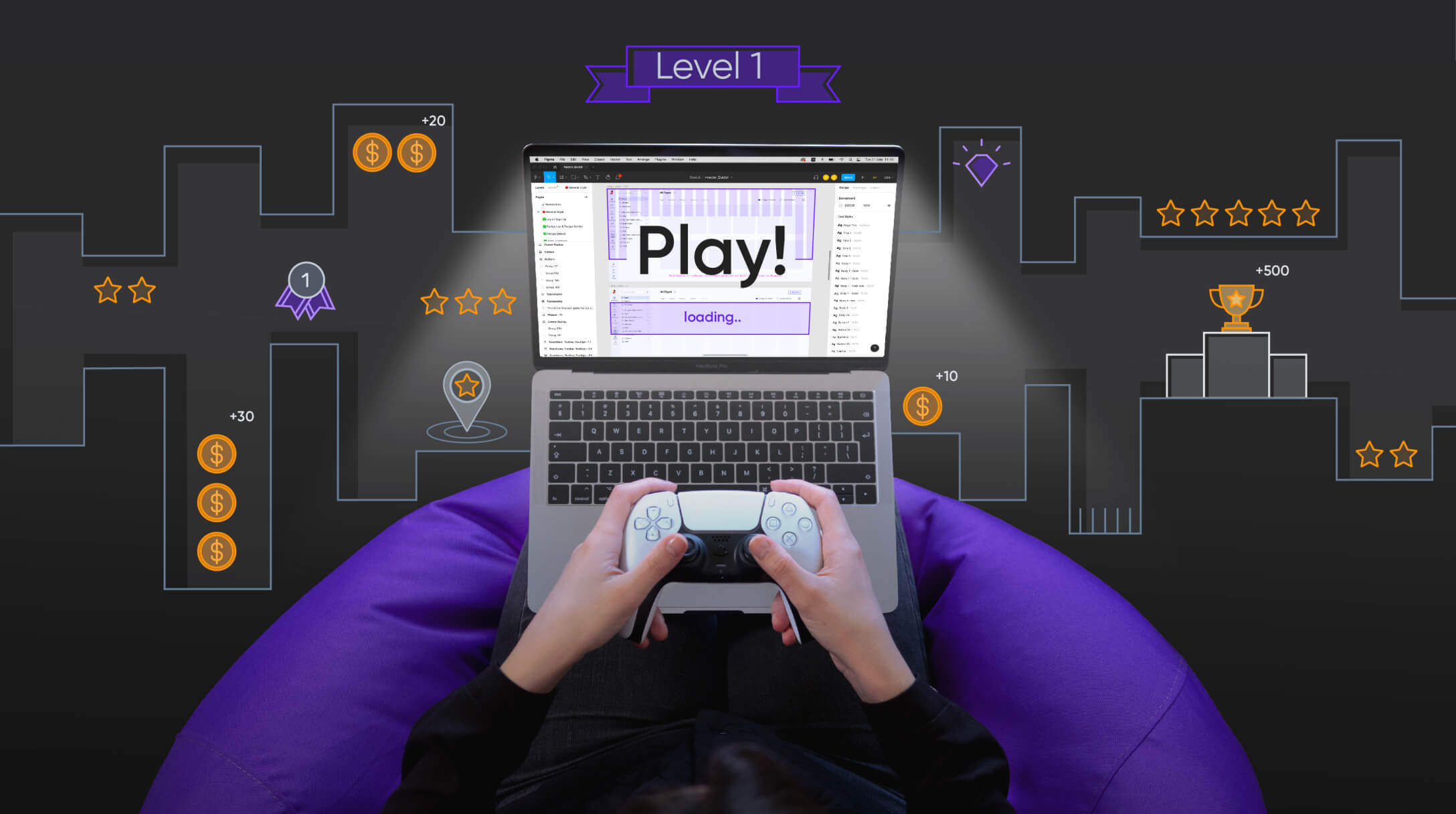Have you ever thought of the distance that any digital product covers, from a rough idea to an accomplished piece of technology? Typically, a founder is a person that launches the entire process. And, if stars align, he or she is the one cutting a ribbon at the finish. Yet along the path, any startup pioneer cannot do without an effective product team, including designers in the first place.
If you as a founder are lucky enough to get a good crew, you need not delve into specifics of design and may just let the professionals do their work. Yet luck has a changeable landscape, and proper staffing may be a tricky thing. In the real world, a well-timed understanding of some key highlights about design may save tons of money and energy for a founder in the long run. It can also prevent you from making commercially fatal mistakes. This article is going to lead you through the most important insights into the designers’ kingdom.
High-grade design is a must
No matter what exactly your product is. It may be a sophisticated fin-tech technology or homemade cookies. In any case, it needs a suitable design to find its way to the user. This point can never be neglected.
A founder may not know anything else about design. But ignorance about its overall importance puts the entire enterprise in question. Society keeps getting increasingly virtual. It conclusively falls under the rule of millennials and Generation Z, with digital heuristics and aesthetics in their blood. Add to that ruthless and increasingly heated competition on the market. Still doubt that neglect for design is a disaster?
You can no longer think the way: “If my product is really novel and of the best quality, people will see its value without all those sophistications. So the design does not matter so much”.
Today you don't actually exist if you don't exist on the Internet, where design determines everything. Even world-famous brands have to take this Lady onboard to keep afloat.
For example, in 2015 one of the most popular U.S. sports channels followed numerous customers’ requests and redesigned the landing page of its website. By the way, this immediately increased the company’s revenue by 35%. In this regard, for new startup founders, good design is all the more a question of survival. However brilliant and sought-after an idea is, it will die out without proper design.

Designers should enter the game from the first day
Even fully aware of design’s importance, some founders think that its full-scale implementation may be left “for later”. Following layman's thinking patterns, they consider design something like a gift-wrapping procedure. It seems a final and celebratory stage of the entire production cycle. Such leaders think the most simple and unappealing interface is more than enough as long as the product is under development, ultimate users are not yet determined, and potential investors are still making their minds.
This is a huge mistake. To begin with, it is fairly unlikely that investors would treat a project seriously if it is not encapsulated in a visually attractive and functional interface.

But what is more important, design lays the foundation for the entire product development, because it is exactly the field ensuring that the project would eventually work. How do designers do this?
- by paving the way to a real user, with all their needs, pain points, concerns, and attitudes;
- by undertaking market research to find a specific niche among similar products and to give a product a chance not to get annihilated by cutthroat competition before you even started;
- by doing dozens of other similarly pivotal and often underestimated things of a designer's job.
As a result of all those efforts, the end outcome may differ from the initial concept envisioned by a founder. But then, it will work solving a real user problem. This is the only thing that really matters.
In turn, the benefit to customers will definitely boomerang back in the form of high net profit rates. The much-quoted Forrester research shows that $1 invested in UX design pays back up to $100 gross margin.
Proper design is science
As a founder, you can be a great visionary and an inspiring leader. Yet when it comes to design issues, even a boss is a mortal being. Personal judgments about product functionality and appearance can differ from real user needs. They may also well differ from guidelines, standards, and pest practices adopted in the designer professional community.
Yet it often happens, when posing a challenge to a product team, you already know how things should be. Even before getting in touch with real users, you have a clear idea of how the system should operate, and how it has to look.
This will not work. If a design is not user-centered, i.e. scientifically tuned to meet user needs, the probability that it would achieve the goal is approximately equal to playing in roulette. Maybe, but unlikely. Tight personal control of every detail is what some bosses like very much. Yet in application to design this practice can shoot back with follow-up problems and inconsistencies.
The best option is to trust professionals and not to interfere with the working process with personal convictions, likes, and dislikes. Data analysis, usability studies, in-depth interviews, and other forms of user experience (UX) research, along with design guidelines and principles, is what should make a true authority for designers’ work.
From our experience, founders that trusted our expertise and were responsive to recommendations usually had much better outcomes at the time-to-market period.
At the same time, such a trust-based approach does not mean total absence of any control. Certainly, a founder has both an authority and an obligation to monitor designers’ workflow and quality of their results. In the disputed areas, you have to double-check with a team why exactly certain decisions were made, making sure they are a match for both your business and user needs.
Design...s
Brand design. Product design. UX design. UI design. Marketing Design. Graphic design. This list goes on and on. A founder should better know distinctions between these realms or, at the very least, realize they are not the same thing.
Hopefully, you do. In such a case you would not assign all the multi-aspect set of design tasks to one or a few specialists blindly, You will try to figure out what exactly fields they are proficient in. Otherwise, there is no point to hope to receive the expected deliverable of the highest caliber.
This is particularly important concerning differentiation between UX and UI. UI/UX designer is a typical title most sought after at IT job search resources. It is necessary to make sure that a person you hire really knows both realms as declared. This is because they relate to two connected yet completely different realms of the human psyche, cognition and perception.
UX is tasked to make the system work effectively and unerringly, while UI ensures that it is pleasant to work with. When a founder understands the difference, an indiscriminate approach to UI/UX roles is the last thing they would decide to do. Practical deliverables such as wireframe design and clickable prototypes help teams connect the two.
By the way, you can find a clear and detailed digest of the different types of designers in our “how to hire a UI/UX designer” guide.
It is not a one-off purchase
Design is an evolving realm. Its scientific fundamentals may remain intact for decades, rooted in mathematics, human psychology, and simply good sense. However, hands-on trends get constantly renewed and updated. They always keep pace with technological developments and social needs of the day.
Following the growth and sophistication of technological capabilities, designers permanently improve their products by resolving an apparently impossible task: to keep interfaces intuitive and simple despite increasingly complex user flow paths and choices. And even such relatively simple elements as web interfaces change all the time.
The Hubspot study showed that most companies redesign their user interfaces (UI) every 18 to 24 months. Simply go to Wayback Machine or Web Design Museum and choose any company to see how radically and consistently their websites get updated. Therefore, if UX/UI designs preserve the same structure and appearance for years, it is time for you as a founder to start thinking if your designer team works the way it should.

Design is a part of a greater whole
Awareness that design is intimately connected with other parts of the production cycle is pivotal for a founder. This is because user experience, an immediate and primary area of a designers’ responsibility, is affected by processes related to data analysis, brand positioning, development, copywriting, marketing, and many other non-design realms.
But any designer is an advocate of user interests in the entire company. Thus they can and should influence their teammates to make proper user-centered choices, even if they are beyond the scope of design competence.
As a founder, you have the biggest authority and “the last word” right in decision-making. You hence can make user experience more focused, by paying attention to designers’ claims and recommendations.
In-house team, independent freelancers, or outsource agency?
The distinction between different types of design contractors is not about the question “who is the best, and who is the worst?”. Rather, the choice between them is a matter of your project’s specifics, its scope, strategy, and funding.
In-house staff provides the highest level of control but it is also the most expensive. This option is very good if you start a multimillion business requiring permanent long-run maintenance and support.
Otherwise, be prepared to get annoyed with permanent office expenditures, taxes, and welfare and social security payments. Do not also forget personal responsibility for HR staffing and quality. All this may result in a chronic headache, a founders’ professional illness.
Freelancers are the cheapest option. Their services fit well into one-time, small-scale and/or urgent projects, such as redesign of a profile page in social media or making a banner for your public speech. However, the pitfall of this choice compared to an organized team is the lowest level of control and accountability.
Design agencies make the golden mean between these two opposites. On the one hand, they provide a high level of quality and reliability by taking responsibility for all operational and transitional processes. They are also in charge of their teammates' qualifications, by recruiting, education, training, and other methods. On the other hand, they are definitely cheaper than in-house teams, especially if you are lucky enough to find a decent offshore design studio.
Some reputable offshore agencies like Cieden offer all-around professional support at a reasonable price. Along with designers and design leads, their staff includes specialists in business analysis, product management and product development. Therefore, a partnership with such a contractor makes successful market entry most probable.
Design is not everything
This statement may look contradictory to what we started with. But it is not. Design is indispensable for a project to become operable, marketable, and enticing. Yet in the absence of a worthy product or service underneath it, the best design is just a nice wrapper without substance.
Digital media permanently compile ratings of “all-time” useless apps, and many of them have pretty nice designs. A project must address a real need or problem of real people (and other living beings, as an option), and not just aim to earn money and waste resources. A designer can make it happen that users will understand, appreciate, and eventually benefit your product on a permanent level. Yet if it is not really useful and not exactly beneficial, even the world's best designer would hardly help.
That is why, the main lesson that any founder should learn about design is the necessity to think twice before launching a startup, hiring a team, and getting the ball rolling. Product development is neither a fast nor an easy way to go through, and it is better to have a solid reason to go on this journey.
As product development continues to evolve, having a strong understanding of critical tools such as JavaScript UI Components can be instrumental in delivering interactive and user-friendly applications. Incorporating these components early in the design process reinforces product strength and offers a competitive edge in an immersive digital landscape.

Conclusion
If you’ve managed to make it through to this point, you are great. Let’s make sure that nothing was lost on the way.
Design is always needed. It is needed as early as yesterday. It is scientific, methodical, and technological. It is multidisciplinary. It should evolve together with the market. It is affected by other fields of a production cycle. Depending on your goals and funding, you may choose to work with an in-house team, a freelancer or a design agency. Yet in any case, you need a worthy product underneath a design to rest assured of success.
At first glance, every idea for a new startup always looks to its founder as unique, great, revolutionary, and beneficial. But then you have to come down to earth and make your project consistent with worldly realities, where the ultimate outcome can differ substantially from the initial concept.
Now you know that design is your first and foremost foundation in this process, while an experienced and effective team of design professionals may become the best option to provide such a basis.



